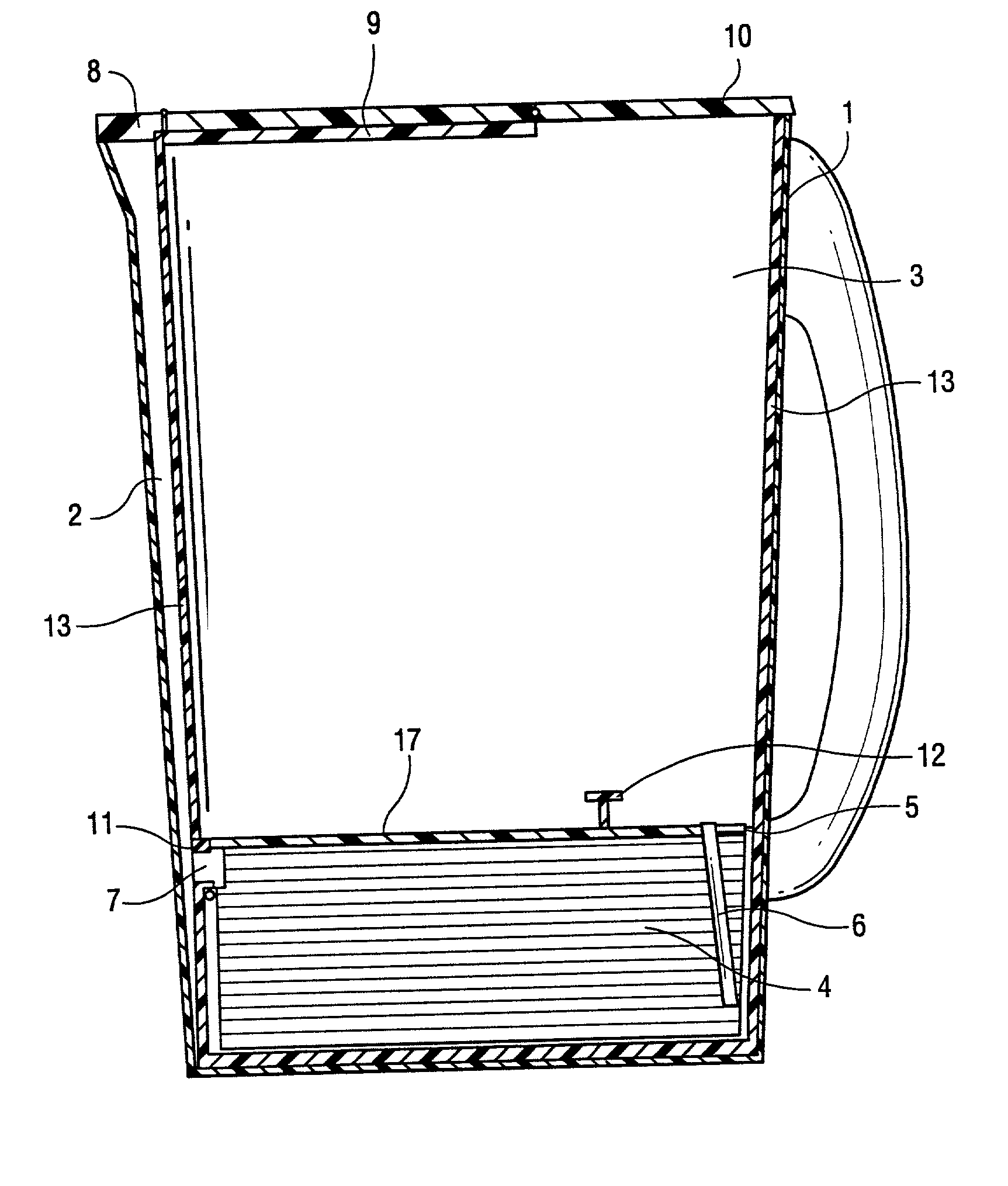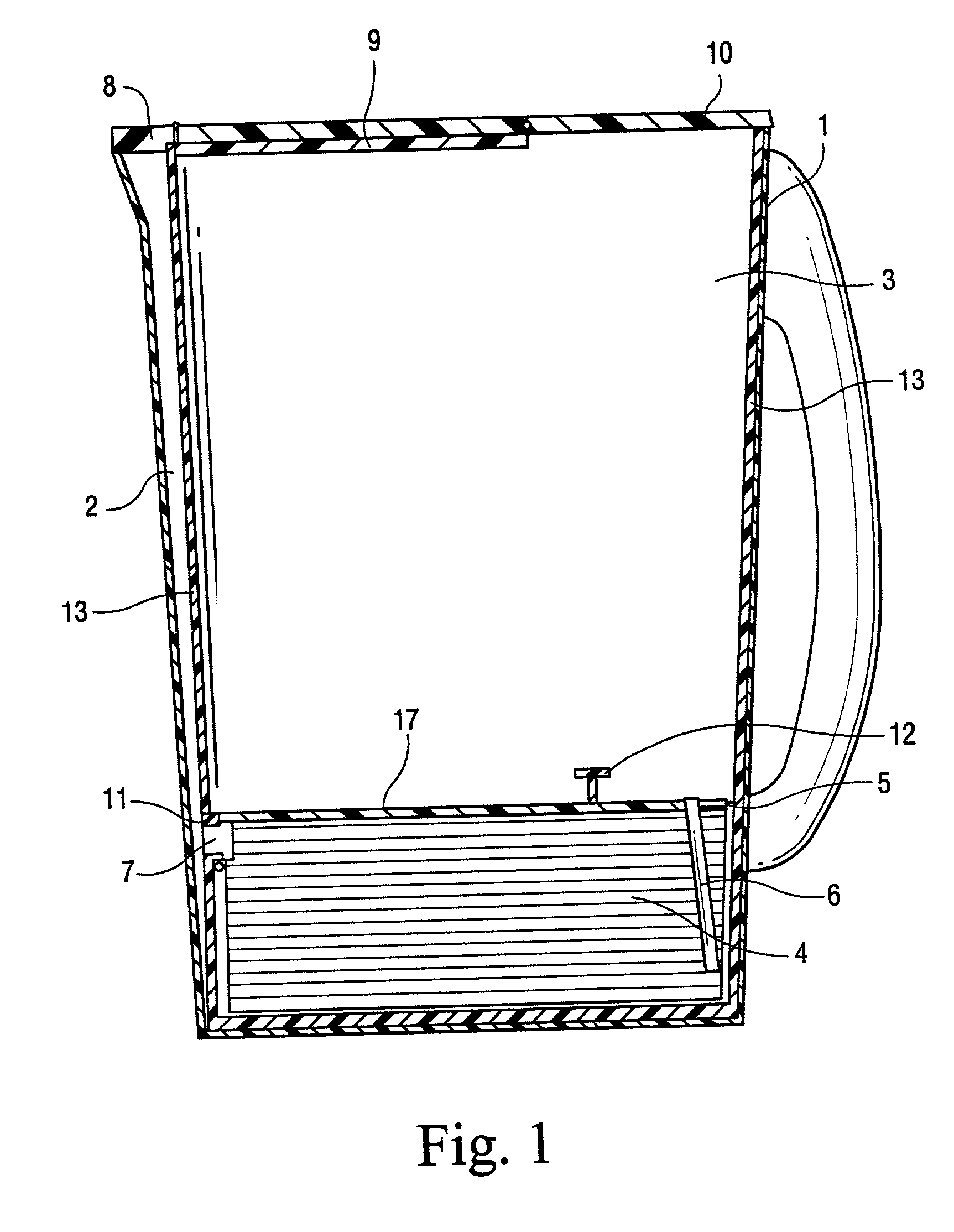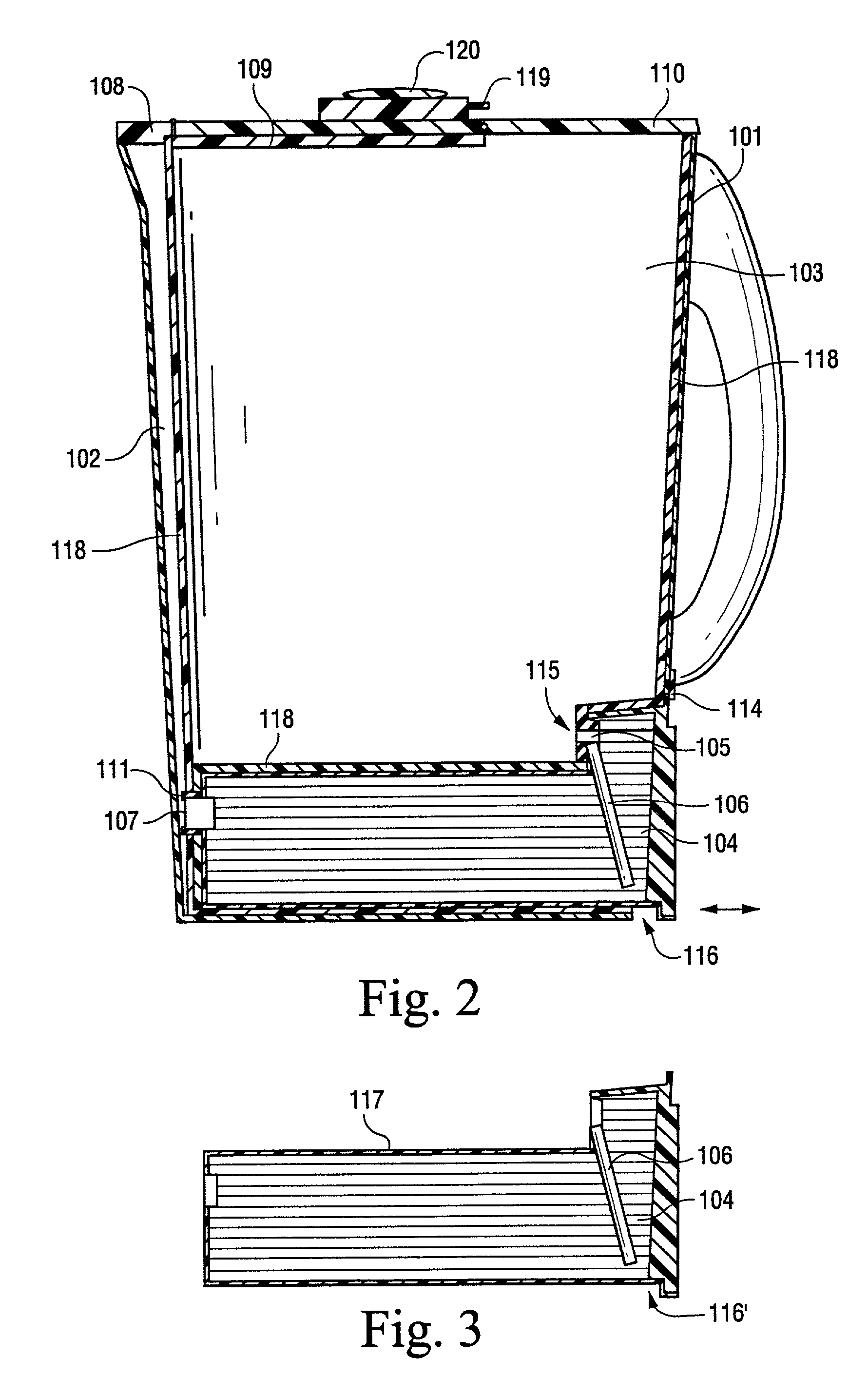Static filter pitcher
a filter pitcher and filter technology, applied in the field of static filter pitchers, can solve the problems of shortened time, large container size, and inability to meet the needs of recharging (filtering) water,
- Summary
- Abstract
- Description
- Claims
- Application Information
AI Technical Summary
Benefits of technology
Problems solved by technology
Method used
Image
Examples
Embodiment Construction
[0050] FIG. 1 schematically illustrates an exemplary exit filtration pitcher / carafe according to the invention.
[0051] The carafe housing 1 contains the raw water reservoir 3, which is in the inner housing 13, into which the high performance filter 4 is placed. The water enters the filter 4 through the water entry port 5 and in turn travels down the water entry tube 6 to the back and bottom of the filter. In 1-3 minutes the water percolates through the filter element 4, until it reaches the water exit port 7. The water will continue to be treated and flow up into the pouring chamber 2 until the water level equalizes in height in the reservoir 3 and the pouring chamber 2. An edge sealing gasket 11 seals the filter to the pouring chamber eliminating leakage at the exit port. The filter 4 and its housing 14 may be placed into and removed from the inside of the raw water reservoir with the aid of the removal tab 12. The water is retained in the reservoir 3 by the semi-fixed top 9 to whic...
PUM
| Property | Measurement | Unit |
|---|---|---|
| density | aaaaa | aaaaa |
| densities | aaaaa | aaaaa |
| volume | aaaaa | aaaaa |
Abstract
Description
Claims
Application Information
 Login to View More
Login to View More - R&D
- Intellectual Property
- Life Sciences
- Materials
- Tech Scout
- Unparalleled Data Quality
- Higher Quality Content
- 60% Fewer Hallucinations
Browse by: Latest US Patents, China's latest patents, Technical Efficacy Thesaurus, Application Domain, Technology Topic, Popular Technical Reports.
© 2025 PatSnap. All rights reserved.Legal|Privacy policy|Modern Slavery Act Transparency Statement|Sitemap|About US| Contact US: help@patsnap.com



